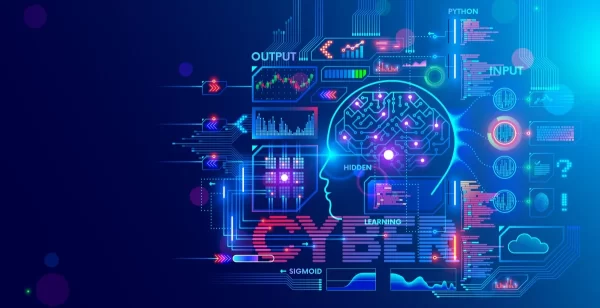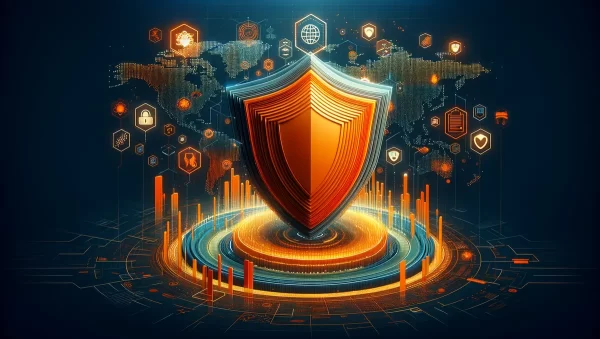Conquering Cyberdefense: An In-Depth Guide to Future-Ready Cyber Defense
Introduction:
As our lives become increasingly digitized, the stakes in cybersecurity grow higher. From personal data to critical infrastructure, the digital realm is a battleground where adversaries deploy ever-more sophisticated tactics. This blog will guide you through the shifting landscape of cyber defense, offering a comprehensive exploration of contemporary threats, innovative defense mechanisms, and forward-looking strategies to ensure a robust cyber shield.
Decoding the Modern CyberDefense Landscape:
Gone are the days when cyber threats were simplistic and easily identifiable. The contemporary threat landscape is multifaceted and continuously evolving:
- Advanced Persistent Threats (APTs): APTs represent a new era of cyber warfare. These stealthy intrusions are characterized by their prolonged nature and high level of sophistication. APTs are not just about breaching security; they involve carefully orchestrated operations designed to infiltrate and remain within a network for extended periods, collecting sensitive data without detection.
- Zero-Day Vulnerabilities: The exploitation of zero-day vulnerabilities is akin to finding a secret door into a heavily fortified building. These are previously unknown security flaws that attackers exploit before developers have a chance to patch them. The impact can be devastating, with attackers gaining unfettered access to critical systems and data.
- Evolving Ransomware: Modern ransomware attacks have expanded their modus operandi. Today’s ransomware doesn’t just lock your files but may also siphon off data for public release, amplifying the threat and leveraging psychological pressure to coerce payment.
Pioneering CyberDefense Strategies:
In the face of these advanced threats, adopting cutting-edge cyber defense strategies is crucial. Here’s how you can stay ahead of the curve:
- Leveraging AI and Machine Learning: Artificial Intelligence (AI) and Machine Learning (ML) are game-changers in cybersecurity. These technologies can sift through enormous datasets to identify unusual patterns and potential threats with speed and precision. AI-driven systems can provide predictive insights, improving both detection and response times.
- Behavioral Analytics: By establishing a baseline of normal behavior within your network, behavioral analytics can detect deviations that may signify a breach. This approach helps in identifying not just external threats but also insider threats and compromised accounts that deviate from the norm.
- Implementing Zero Trust Architecture: Zero Trust is a paradigm shift in security, emphasizing continuous verification. This model operates on the principle that no entity—whether inside or outside the network—is inherently trustworthy. Every request for access must be authenticated, authorized, and encrypted, significantly reducing the attack surface.
- Adopting Extended Detection and Response (XDR): XDR integrates various security layers—such as endpoint, network, and cloud security—into a unified system. This integration provides comprehensive visibility and a coordinated response to threats, enhancing the overall effectiveness of security operations.
- Emphasizing Cyber Hygiene and Continuous Training: Regular training for employees on recognizing phishing attempts and other social engineering tactics is essential. Coupled with routine updates and rigorous patch management, good cyber hygiene practices form the backbone of a strong defense strategy.

Case Studies: Insights from Major Cyber Incidents
- The SolarWinds Incident: The SolarWinds breach was a wake-up call for supply chain security. Attackers compromised a widely-used network management tool, highlighting vulnerabilities in third-party software. This incident underscores the need for vigilant monitoring and comprehensive security measures for third-party applications.
- The Colonial Pipeline Ransomware Attack: The disruption of the Colonial Pipeline illustrated the critical importance of incident response plans and backup strategies. The attack demonstrated how ransomware can target critical infrastructure, emphasizing the need for resilience and well-coordinated recovery plans.
Looking to the Future: Emerging Trends in CyberDefense
As technology advances, so too will the strategies for defending against cyber threats.Here are the upcoming trends to keep an eye on:
- Quantum Cryptography: Quantum cryptography promises to revolutionize data security by leveraging quantum mechanics to create virtually unbreakable encryption. This technology could provide new levels of security against increasingly sophisticated cyber threats.
- Automated Threat Response: The future will likely see more sophisticated automated systems capable of responding to threats in real-time. Automation will reduce response times and human error, making cyber defenses more agile and effective.
- Collaborative Defense Networks: Enhanced collaboration between organizations, governmental bodies, and cybersecurity firms will foster a more resilient defense ecosystem. Information sharing and joint initiatives will help preempt and mitigate widespread cyber threats.
Conclusion:
In a world where cyber threats are becoming more complex and pervasive, staying ahead requires a proactive and multifaceted approach. By embracing advanced technologies, adopting comprehensive defense strategies, and learning from past incidents, we can build a resilient cyber defense framework. The path to a secure digital future is continuous, but with innovation and vigilance, we can fortify our defenses and safeguard our digital lives.
Call to Action:
To stay ahead in the ever-evolving landscape of cyber defense, engage with ongoing updates, participate in cybersecurity training, and regularly assess and enhance your security posture. By staying informed and prepared, we can collectively build a safer, more secure digital world.
FAQs:
1. What Sets Cyberdefense Apart from Traditional Cybersecurity?
- Answer: Cyberdefense is a proactive, forward-thinking approach to safeguarding digital assets. Unlike traditional cybersecurity, which focuses on protection and reaction, cyberdefense involves anticipating threats, implementing preventive measures, and maintaining constant vigilance. It’s about staying ahead of potential attackers by preparing for and mitigating risks before they materialize.
2. How Does Threat Intelligence Empower Cyberdefense?
- Answer: Threat intelligence is a cornerstone of effective cyberdefense, offering critical insights into the latest cyber threats and attacker methodologies. By leveraging this information, organizations can enhance their defenses, predict potential vulnerabilities, and take preemptive actions to thwart cyberattacks before they occur.
3. In What Ways Does Artificial Intelligence Transform Cyberdefense?
- Answer: Artificial intelligence revolutionizes cyberdefense by automating threat detection and response, analyzing large datasets to identify anomalies, and predicting potential attack vectors. This not only accelerates the identification of threats but also enables organizations to respond swiftly and effectively, minimizing the impact of cyber incidents.
4. Why is Human Expertise Crucial in Cyberdefense?
- Answer: Human expertise remains indispensable in cyberdefense, particularly in interpreting complex threat data, making strategic decisions, and responding to sophisticated attacks. While AI and automation play significant roles, the nuanced understanding and adaptive thinking that human professionals bring are vital for a comprehensive defense strategy.
5. How Does Cyberdefense Evolve to Combat New Threats?
- Answer: Cyberdefense is dynamic, constantly evolving to address new and emerging threats. This evolution involves adopting cutting-edge technologies, refining defense strategies, and continuously updating security protocols. Staying informed about the latest developments in cyber threats ensures that defenses are always one step ahead.
6. What Are the Core Elements of an Effective Cyberdefense Strategy?
- Answer: An effective cyberdefense strategy integrates several key elements: real-time threat intelligence, advanced monitoring and detection systems, robust incident response plans, regular security audits, and comprehensive employee training. Each of these components contributes to a layered defense system capable of anticipating and neutralizing threats.
7. Why Should Small Businesses Invest in Cyberdefense?
- Answer: Small businesses are increasingly targeted by cybercriminals due to perceived vulnerabilities. Investing in cyberdefense not only protects valuable data and resources but also helps small businesses build trust with customers by demonstrating a commitment to security. A tailored cyberdefense approach can provide significant protection against a wide range of cyber threats.
8. What Role Does Collaboration Play in Effective Cyberdefense?
- Answer: Collaboration is key to strengthening cyberdefense, both within organizations and across industries. By sharing knowledge, resources, and best practices, organizations can better identify and mitigate threats. Partnerships with external entities, such as threat intelligence providers and government agencies, further enhance an organization’s defensive capabilities.
9. What Trends Will Shape the Future of Cyberdefense?
- Answer: The future of cyberdefense will likely be characterized by increased reliance on AI, machine learning, and automation to counter increasingly sophisticated cyber threats. As attackers continue to evolve, so too will the technologies and strategies used in cyberdefense, with a focus on preemptive action and rapid response.
10. How Can Organizations Cultivate a Strong Cyberdefense Culture?
- Answer: Cultivating a strong cyberdefense culture involves promoting awareness, continuous education, and a shared sense of responsibility across all levels of the organization. By integrating cyberdefense into the everyday mindset of employees, organizations can create an environment where security is prioritized, and potential threats are recognized and addressed promptly.




